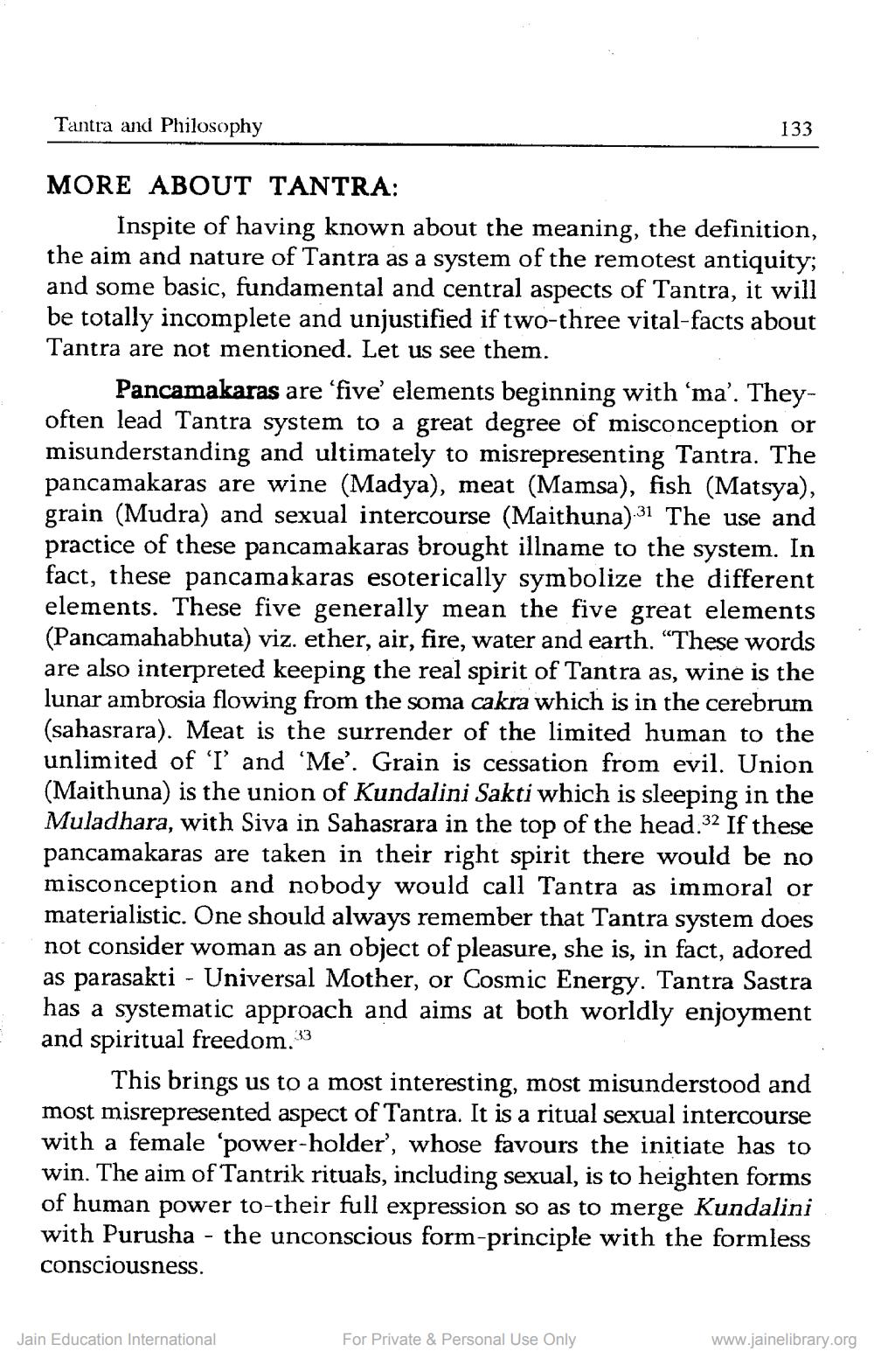________________
Tantra and Philosophy
133
MORE ABOUT TANTRA:
Inspite of having known about the meaning, the definition, the aim and nature of Tantra as a system of the remotest antiquity; and some basic, fundamental and central aspects of Tantra, it will be totally incomplete and unjustified if two-three vital-facts about Tantra are not mentioned. Let us see them.
Pancamakaras are ‘five elements beginning with ‘ma'. Theyoften lead Tantra system to a great degree of misconception or misunderstanding and ultimately to misrepresenting Tantra. The pancamakaras are wine (Madya), meat (Mamsa), fish (Matsya), grain (Mudra) and sexual intercourse (Maithuna).31 The use and practice of these pancamakaras brought illname to the system. In fact, these pancamakaras esoterically symbolize the different elements. These five generally mean the five great elements (Pancamahabhuta) viz. ether, air, fire, water and earth. “These words are also interpreted keeping the real spirit of Tantra as, wine is the lunar ambrosia flowing from the soma cakra which is in the cerebrum (sahasrara). Meat is the surrender of the limited human to the unlimited of land 'Me'. Grain is cessation from evil. Union (Maithuna) is the union of Kundalini Sakti which is sleeping in the Muladhara, with Siva in Sahasrara in the top of the head.32 If these pancamakaras are taken in their right spirit there would be no misconception and nobody would call Tantra as immoral or materialistic. One should always remember that Tantra system does not consider woman as an object of pleasure, she is, in fact, adored as parasakti - Universal Mother, or Cosmic Energy. Tantra Sastra has a systematic approach and aims at both worldly enjoyment and spiritual freedom.33
This brings us to a most interesting, most misunderstood and most misrepresented aspect of Tantra. It is a ritual sexual intercourse with a female 'power-holder', whose favours the initiate has to win. The aim of Tantrik rituals, including sexual, is to heighten forms of human power to-their full expression so as to merge Kundalini with Purusha - the unconscious form-principle with the formless consciousness.
Jain Education International
For Private & Personal Use Only
www.jainelibrary.org




